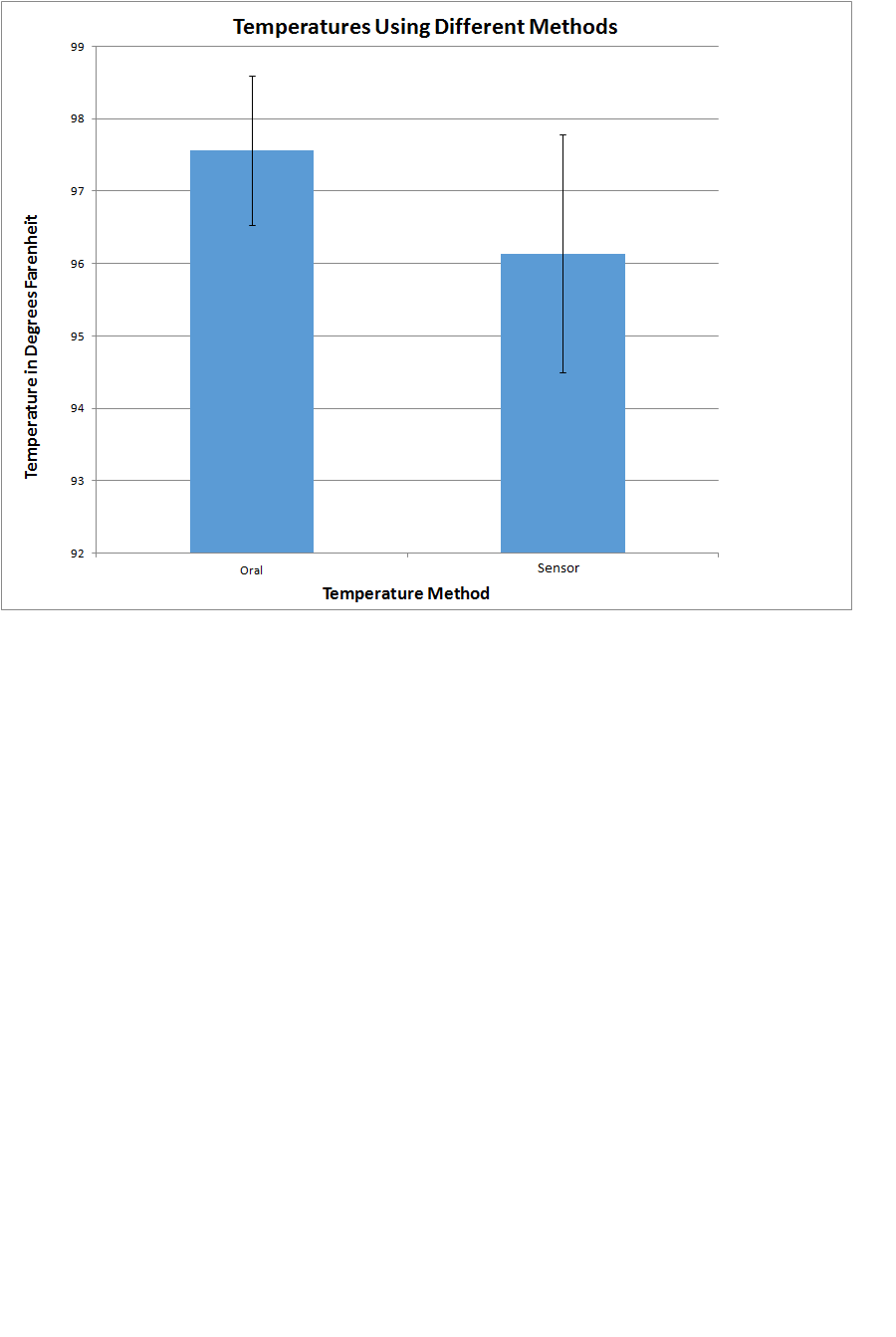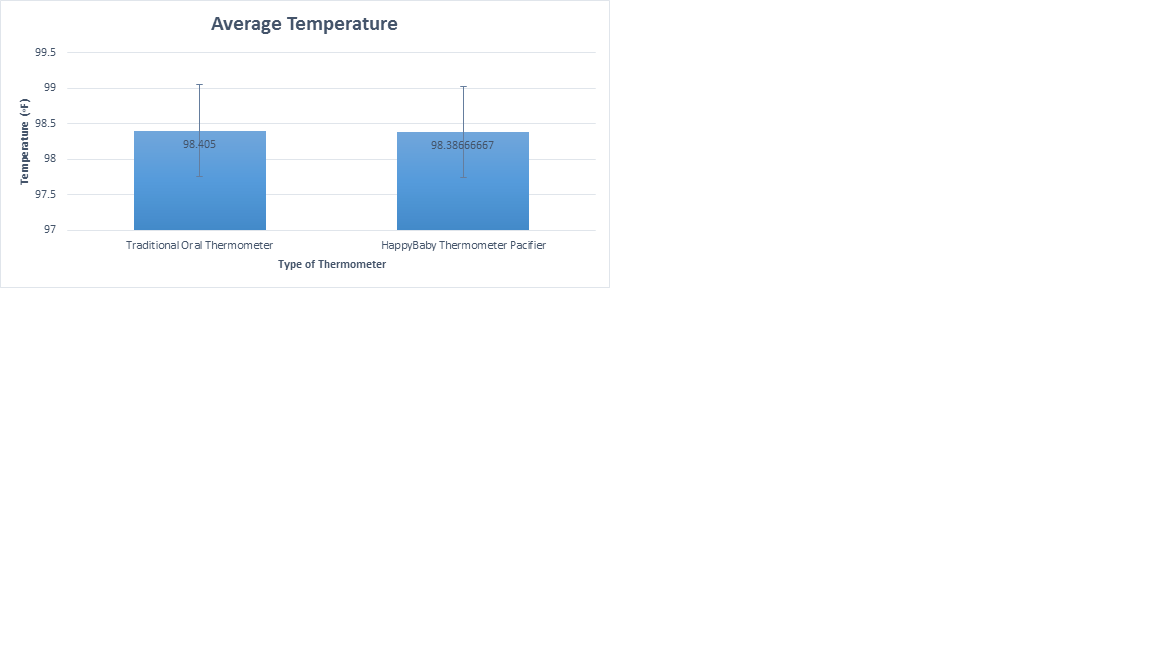BME100 f2013:W1200 Group3 L3
| Home People Lab Write-Up 1 | Lab Write-Up 2 | Lab Write-Up 3 Lab Write-Up 4 | Lab Write-Up 5 | Lab Write-Up 6 Course Logistics For Instructors Photos Wiki Editing Help | |||||||
|
OUR TEAM
LAB 3A WRITE-UPDescriptive Statistics(Descriptive statistics for the data set) Oral Thermometer The average temperature reading for the oral thermometer was 97.5661 degrees fahrenheit, and the standard deviation was 1.03. The error value for the oral thermometer is 0.077682247. Underarm Sensor The average temperature reading for the under arm sensor was 96.137 degrees fahrenheit, and the standard deviation was 1.641. The error value for the oral thermometer is .123663236. The P-value was 8.83326E^-22 which is essentially 0. The correlation coefficient was .050573103.
(Well-labeled graph with error bars and significance)
AnalysisThe null hypothesis states that the thermometer temperature is not the same. The alternative hypothesis states that the temperatures are the same. The average temperature for the oral sensor is 97.566, and the standard deviation of the oral sensor is 1.03. The average for the external sensor is 96.137, and the standard deviation of that is 1.641.Due to the large sample size, we were able to find the true answer of whether the oral thermometer was the same as the external sensor, and we concluded that the external sensor is inaccurate and we can figure this because the oral thermometer is a proven product.The p value was 8.83326E^-22, stating that there is nearly a zero percent chance that they are the same. This can be rationalized because the P value we got is less than 0.05 The correlation between the sensor and oral thermometer was .050573103, showing little to no correlation between the two.
Summary/DiscussionOn our first attempt we managed to get the device paired with the iPhone via Bluetooth after 3 tries. After it paired with the iPhone it would not actually measure body temperature and did not display anything. We switched to another device and after extensively trying to connect the sensor to the iPhone it would not work. This process lasted about twenty minutes and eventually the device didn't even turn on so we were unable to perform the experiment. Our recommendation is to make the device more compatible with technology. One thing that could help is to improve the Bluetooth connectivity. The app would not actually read the temperature because of the lack of Bluetooth connection. As for the device failing to turn on, the charging mechanism could be fixed or an alternative approach to what makes the device run (e.g batteries, charger,etc.)
LAB 3B WRITE-UPTarget Population and NeedIdea: Thermometer Pacifier • Flavored (milk) • 500 hours of battery life • Rechargeable • Internet connectivity • Syncs with phone/ computer o Displays graph of temperature/time • Phone notification when your baby has a fever • Accurate • Takes five seconds to measure temperature Target Audience: Babies (Ages: 0-4) This is needed for parents who need an easier method to measuring their babies temperature.
Device Design[[1]]
Inferential StatisticsWe found 60 test subjects which we asked to measure temperature. 30 measured using our device immediately followed by the traditional oral device. The other 30 measured using the traditional thermometer immediately followed by our device. Their temperatures were recorded and compared. Null Hypothesis: The temperatures of the two thermometers are the same Alternative Hypothesis: The temperatures of the two thermometers are different. Traditional Oral Thermometer: AVG-98.405 SD-0.642142864 HappyBaby Thermometer Pacifier AVG-98.38666667 SD-0.696107012 T-Test → p value= .76565 From this, (p-value & error bar overlap on graph) we fail to reject the null hypothesis showing that our device’s accuracy in measuring temperature is comparable to that of the proven traditional oral sensor.
Graph
| |||||||


